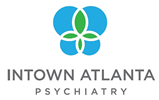May 20, 2024 – by Jenna Murphy
Did you know that 9% of the United States population will have some sort of eating disorder at some point of their life? For reference, that’s almost 30 million Americans. According to the National Association of Anorexia Nervosa and Associated Disorders (ANAD), 15% of women will suffer from an eating disorder by the time they reach 40, but only 27% ever successfully get treatment for it (G, A., 2024).
According to the most recent version of the Diagnostic and Statistical Manual of Mental Disorders (DSM-5), an episode of Binge-Eating Disorder (BED) includes eating a substantial amount of food in comparison to those who are under similar circumstances and being unable to control the amount of food eaten. The second criteria of this disorder associates with symptoms, such as eating rapidly, feeling uncomfortably full, and feeling embarrassed or guilty after episodes. Usually, these experiences recur at least once a week for 3 months. There are levels of severity, 1-3 being mild and 14+ being on the extreme spectrum. Another fact of this disorder is also presented in the DSM-5, in which the APA case discusses disorders that are often comorbid with BED. It is commonly diagnosed with bipolar, depressive, anxiety, and substance use disorders, which make it even harder to combat (American Psychiatric Association, 2013).
Luckily for us, disorders nowadays have wider availability to treatments, especially since the invention of the internet gives us more access to education. The idea for treatment is to encourage and implement healthy, regular eating habits. Certain types of therapy have also been found to be helpful in battling this disorder. Enhanced cognitive behavioral therapy (CBT-E) can help individuals struggling with this disorder to better cope with issues that trigger the action of binge-eating. Integrative cognitive-affective therapy (ICAT) and dialectical behavioral therapy also help individuals learn the skills to manage their stressors and emotions that can potentially lessen desires to engage in binge-eating behaviors (Mayo Clinic, 2024).
Other forms of treatment for BED also includes medication, specifically Lisdexamfetamine (Vyvanse®). The Cleveland Clinic wrote an article that discusses this medication, usually used for ADHD, and has been approved by the FDA. The main idea behind using this medication for BED is that it can help with impulse control. However, this is not the only factor of having BED – hence the use of other treatments in addition to medication. It is common that other medications such as antidepressants can also help with other underlying or comorbid disorders.
In conclusion, binge-eating disorder affects an insurmountable number of Americans across the country, not to mention what is happening outside of the continent. However, with the help of therapy, medication, and being surrounded by people who want to help, it can go a long way to produce healthier lifestyles and longer lives.
